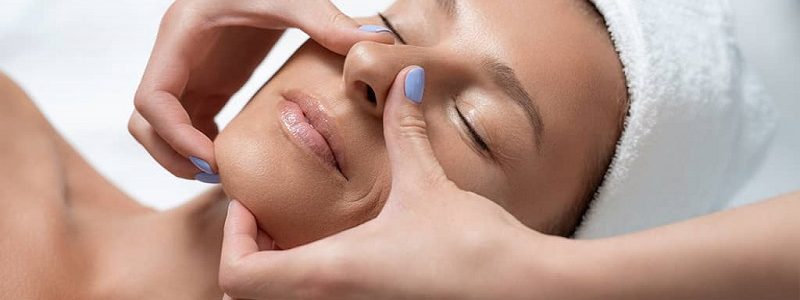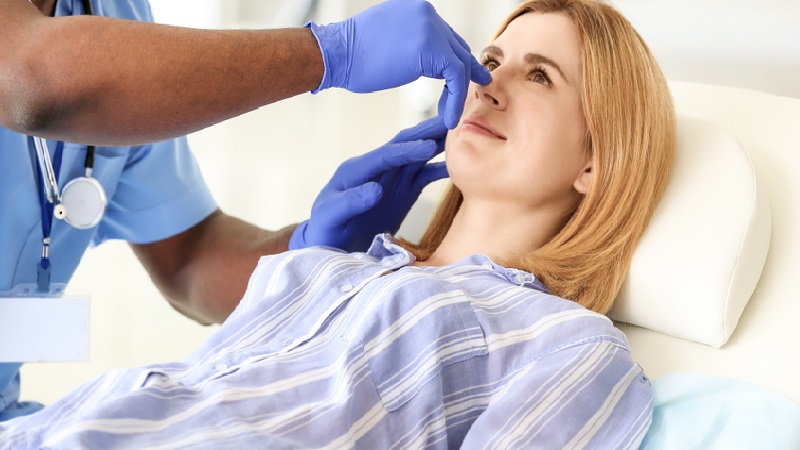Nose massage after rhinoplasty
Nasal massage is recommended to reduce the swelling and bruising of the nose, and those who are looking for a way to remove this swelling and bruising in the shortest possible time, now there is such a way in front of them, and that is nasal massage.!
But how can you perform nasal massage and what is nasal massage training after cosmetic surgery? Note that massaging the nose must be done in a special way, otherwise it will do more harm than good and will damage your nose and the cosmetic surgery done.. Therefore, you should carefully make slow circular movements with your fingers on both sides of the nose.
Be careful not to do this too hard to avoid damaging your nose. Also, the movement of your hand should not reach the nasal bone. To learn nasal massage, it is better to ask your surgeon to perform a massage on your nose before you have rhinoplasty surgery to learn exactly what to do after the operation.. In some cases, nasal massage is not recommended, which the doctor will warn you if necessary.
"Since the nose after surgery to make fluids (up to a year) "Massage movements help expel edema or tissue fluid from the skin and subcutaneous tissues."
Stay with us with interesting and readable content دکتر مجید راستی Of nose surgery و فوق تخصص جراحی پلاستیک اصفهان :
- The main reason for the enlargement of the fleshy nose after surgery
- Rhinoplasty Isfahan
- The cost of performing nose surgery in 1403
- YouTube channel of Isfahan nose surgeon دکتر مجید راستی
- دکتر مجید راستی Rhinoplasty Isfahan
- An example of rhinoplasty with a fancy model
- بهترین متخصص جراح بینی
- Natural or natural aesthetic nose job
Massage movements help to expel edema or tissue fluid from the skin and subcutaneous tissues.
If you want to know when the nasal arch and the main shape of the nose will be determined after the operation? It must be said that without following the medical tips and recommendations, you will not get results soon. The following will help you recover and heal faster after rhinoplasty :
- It is recommended that you sleep with your head higher than your heart for the first few days after surgery. This can help your breathing return to normal faster, minimize swelling and improve blood flow..
- It is recommended to sleep on your back after rhinoplasty surgery. During recovery, the nose will be soft and malleable. Therefore, it is better not to sleep on your stomach or side, because sleeping on your side after rhinoplasty can put pressure on the nose.. This issue not only causes discomfort but also endangers the results of the operation.
- With the removal of eye swelling and sensitivity to touch, you can use contact lenses if needed.
- Exposure to smoke and dust may cause nasal irritation and infection.
- Salt increases fluid retention and increases swelling during recovery. You can minimize swelling by following a low-sodium diet for the first 2 weeks after surgery.
- To brush the upper teeth, move the toothbrush slowly. There may also be numbness of the teeth and palate for several months.
- If there is no problem in terms of bleeding, you can resume sports and swimming after 3 weeks. Diving should be postponed for 2 months.
- If you normally wear prescription glasses, you can choose other options, such as contact lenses, during your recovery period..
- Always wear sunscreen with SPF 30 or higher on your nose when you go out during the recovery period.. Because a lot of sunlight causes permanent changes and
- It becomes irregular on the skin of the surgical area. The same is true for any other surgery.
- Try to sneeze through your mouth instead of your nose.
Precautions: Tell your doctor about the following .
If you experience the following after rhinoplasty, to جراح بینی Refer yourself :
- Sudden increase in the amount of bleeding from the nose that does not resolve with pressure, ice and raising the head.
- Fever of more than 38.5 degrees Celsius, which continues despite increasing the amount of fluids received and the use of antipyretic medicine..
- Persistent and sharp pain that is not relieved by the prescription of painkillers.
- Increased swelling or redness in the nose or eyes.
- Breathing problems and shortness of breath
- Occurrence of symptoms that indicate blood clots in the leg or deep vein thrombosis. As: Pain in the leg and behind the knee, pain in the thigh or groin, redness and swelling in the back of the leg or groin..
- Loosening of sutures or opening of the surgical incision.
- Bleeding from the surgical incision site.
- Drainage of pus from the surgical incision site.


